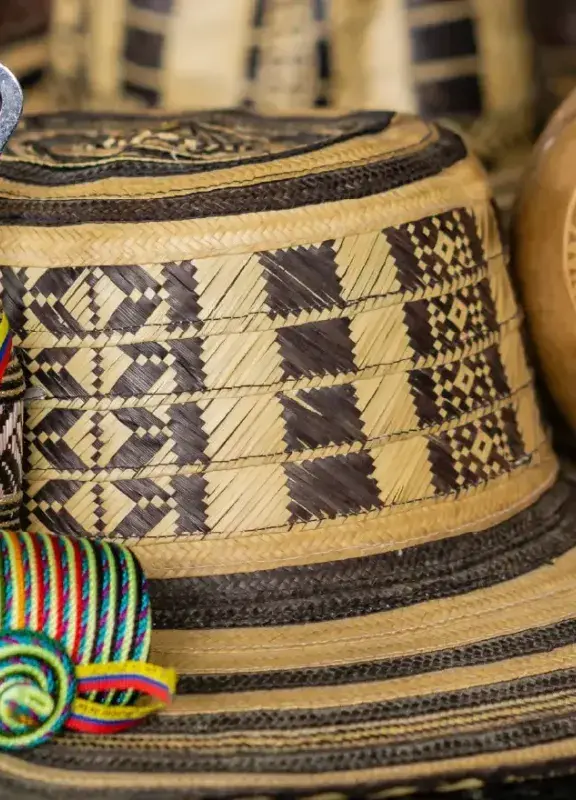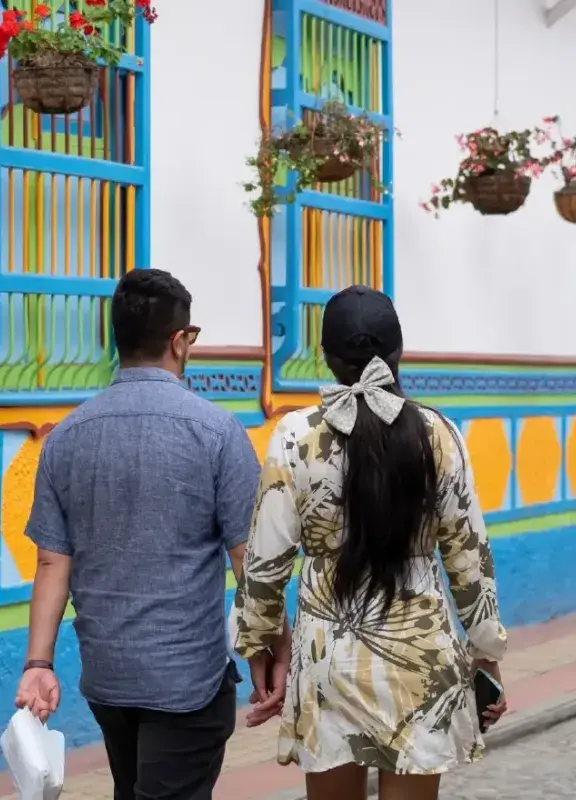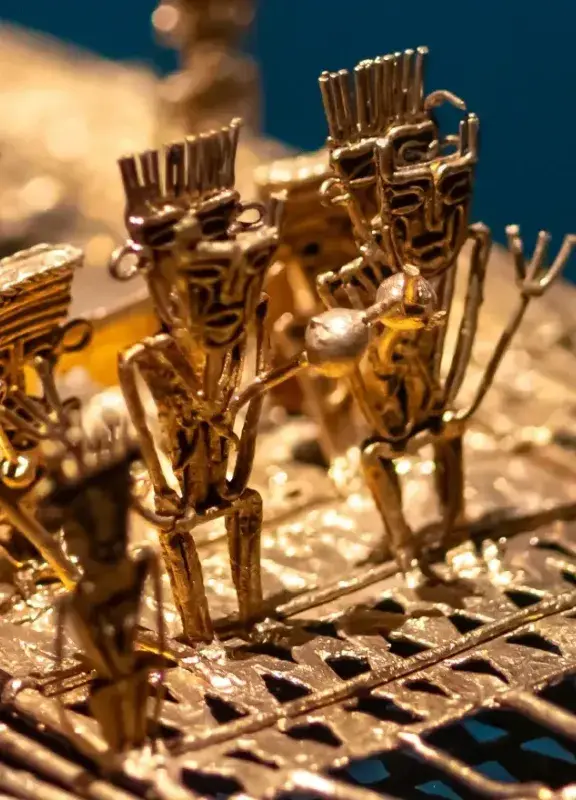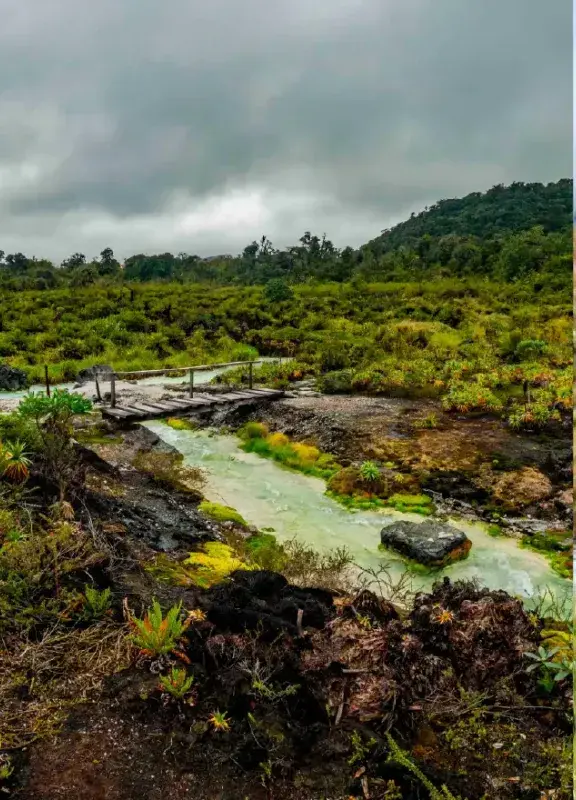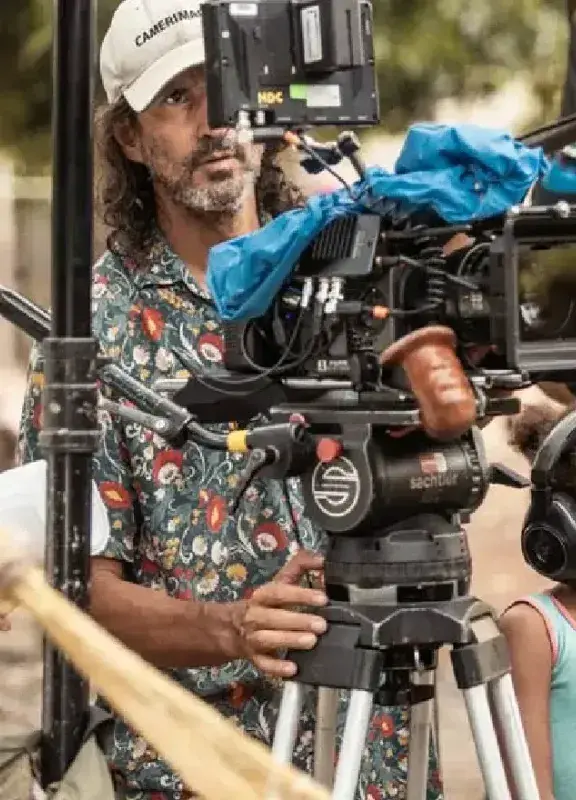The pre-Columbian era: ancient roots of Colombia
The Chibchas in the 5th century B.C. were the first inhabitants to populate what we know today as Colombia.
The pre-Columbian era began in the 5th century B.C. Through the Isthmus of Panama, the first inhabitants of the country entered Colombian territory: the Chibcha family. Due to major differences in their idiosyncrasies, the group eventually split into the Caribs, Arawaks, and Muiscas—relatively small tribes in size and population that left important cultural legacies.
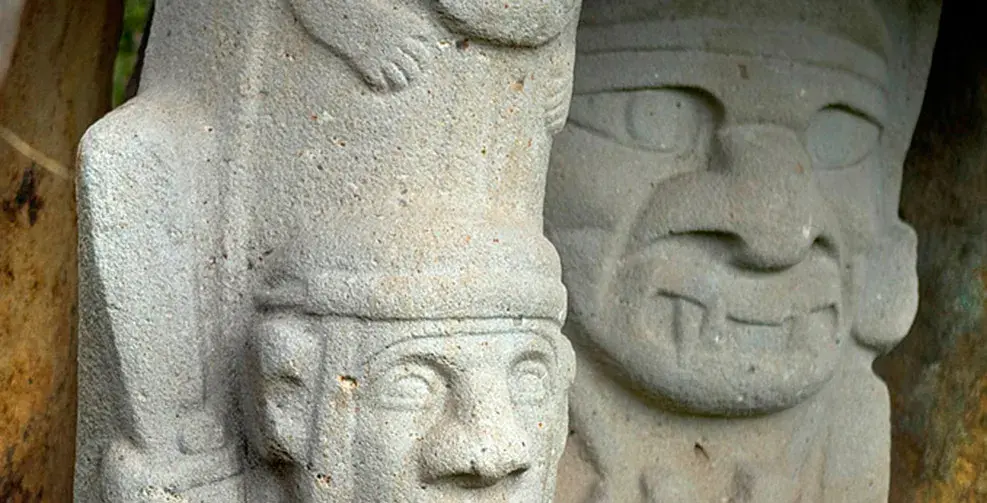
With a high level of cultural and technological development, the Muiscas settled in the central region of the country. They were farmers, weavers, miners, and goldsmiths. The myth of El Dorado, of Muisca origin, stems from the ceremony in which a new cacique, covered in gold, was taken to the center of Lake Guatavita.
Another family that is part of Colombia’s pre-Columbian history was the Arawak family, who populated La Guajira and Caquetá, engaging in livestock farming, agriculture, fishing, and hunting. The Caribe family also practiced similar trades but were warlike and showed no significant cultural development. A common trait among these peoples was polytheism.
During the pre-Columbian era in Colombia, around twelve distinct cultures developed in Colombian territory before the Conquest. The Quimbaya, Sinú, Tayrona, and Calima peoples stood out, also known for their pottery and goldwork.
Places to experience pre-Columbian culture up close in Colombia
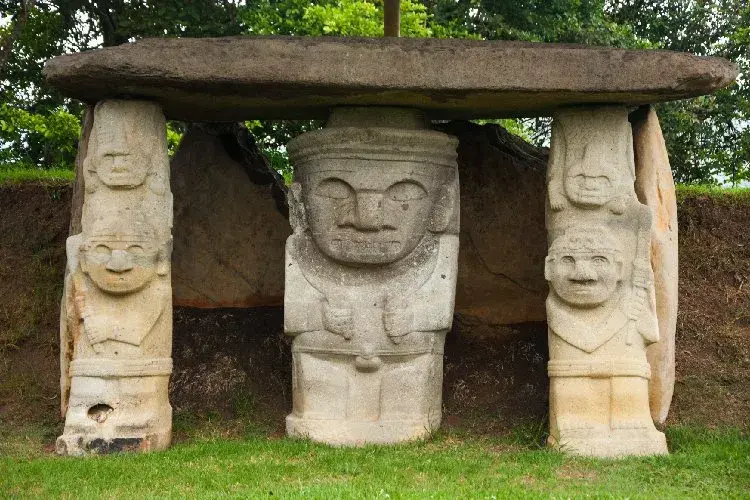
- In Bogotá, you’ll find the Gold Museum, which houses the largest collection of pre-Hispanic goldwork in the world. Located in the historic center of the capital, this emblematic site is an outstanding option to relive the history of the Americas.
- The works of pre-Columbian cultures can also be admired at the Archaeological Museum Casa del Marqués de San Jorge and the National Museum in Bogotá; the Quimbaya Culture Museum in Armenia; the Tayrona Culture Museum in Santa Marta; and the Sinú Culture Museum in Cartagena.
- The San Agustín Archaeological Park, in the department of Huila, contains impressive representations of beasts, animals, and gods from the culture that inhabited the region between the 1st and 8th centuries. Declared a World Heritage Site, the park features the largest necropolis on the continent and the most extensive set of monuments and megalithic structures in South America.
- The Lost City is a stunning location nestled in the Sierra Nevada de Santa Marta, the highest coastal mountain range in the world. It was built around the year 700. Its 250 terraces are the main archaeological attraction of the area.
Learn more about our history and about the intangible heritage of Colombia.
You may also be interested in:
 Welcome, you are in
Welcome, you are in 




